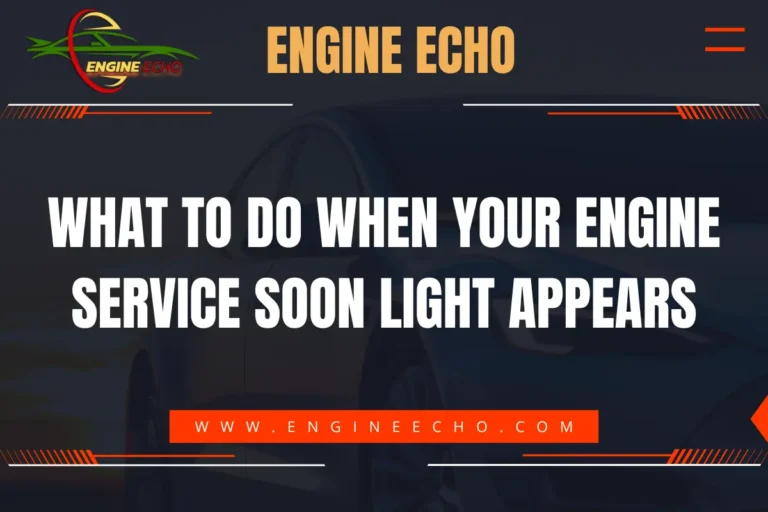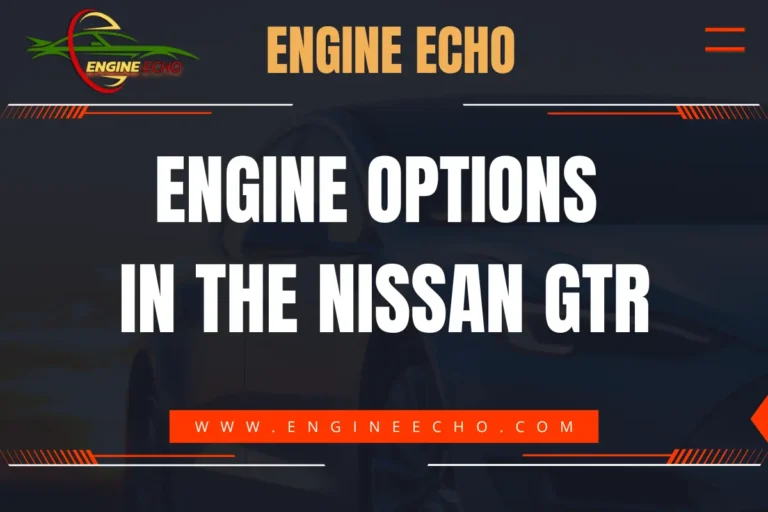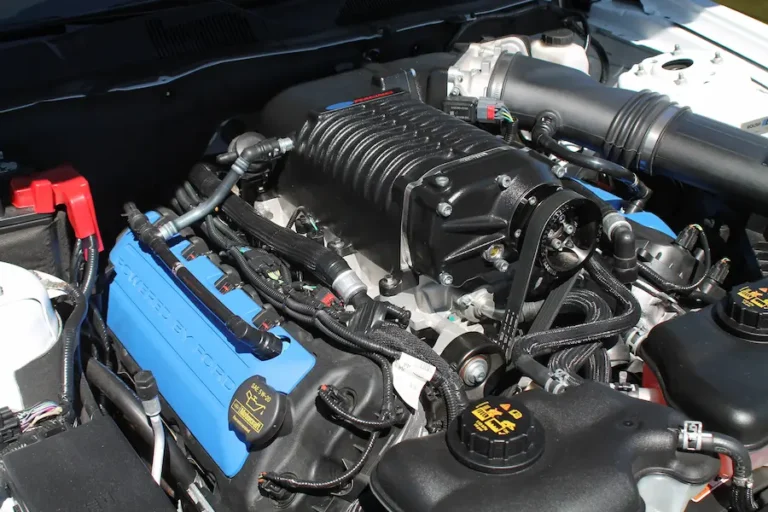Cars with Big Block Engines

Key Takeaways
- Understanding Big Block Engines: Discover what sets big block engines apart, including their massive size, unparalleled power, and lasting impact on automotive history.
- Iconic Models: Delve into some of the most legendary cars that housed big block engines, like the Chevrolet Chevelle SS and Dodge Charger R/T, and why they continue to captivate enthusiasts.
- Performance and Evolution: Uncover the raw performance capabilities of big block engines and how they’ve evolved over time, maintaining their status as powerhouses in the car world.
- Modern Relevance: Understand the role big block engines play today, their continued appeal, and what the future might hold for these legendary powerplants.
Introduction to Big Block Engines
There’s something undeniably captivating about big block engines. They aren’t just mechanical powerhouses—they’re symbols of an era when cars were designed with a singular focus: to deliver pure, unadulterated power. My fascination with these engines began the first time I heard one rumble to life. That sound—a deep, throaty growl—sticks with you. It’s not just noise; it’s a promise of what’s to come when you press the pedal to the metal.
Big block engines defined the golden age of muscle cars in the 1960s and 1970s, and they continue to hold a special place in the hearts of car enthusiasts like myself. Through this article, I want to share why these engines deserve to be celebrated and why, despite modern advances, they still hold their own in the automotive world.
Key Characteristics of Big Block Engines
Size and Displacement
- Large Size: Big block engines are the giants of the automotive world. Their larger physical dimensions aren’t just for show—they allow for greater displacement, often ranging from 400 to over 500 cubic inches. This means more air and fuel can enter the engine, which translates to more power. Trust me, when you’re behind the wheel of a big block-powered car, you can feel every bit of that power.
Power Output
- High Horsepower: The first time I drove a car with a big block engine, I was blown away by the sheer horsepower. These engines are built to deliver serious performance, and they do it effortlessly. Every time I rev up a big block engine, the surge of power never fails to give me chills.
Durability and Longevity
- Robust Construction: Big block engines are built to last. With thicker cylinder walls and stronger crankshafts, these engines can take a beating and keep running. I’ve seen big block engines with hundreds of thousands of miles on them that still perform like new—a testament to their durability.
Iconic Cars with Big Block Engines
Chevrolet Chevelle SS
- Overview of the Model: The Chevrolet Chevelle SS is more than just a car; it’s an icon of the muscle car era. The first time I laid eyes on one, I was struck by its aggressive stance and timeless design. The Chevelle SS 454, with its LS6 big block engine, is the stuff of legends, producing 450 horsepower and leaving an indelible mark on automotive history.
Ford Mustang Boss 429
- Overview of the Model: The Ford Mustang Boss 429 was built for one purpose: to dominate. With its 429 cubic inch V8 big block engine, this car wasn’t just fast—it was a force to be reckoned with. Honestly, driving one of these beasts is an experience every car enthusiast needs to check off their bucket list.
Dodge Charger R/T
- Overview of the Model: The Dodge Charger R/T, with its sleek lines and powerful engine options, was designed to thrill. Whether you opted for the 440 Magnum or the legendary 426 Hemi, you were guaranteed a driving experience like no other. Personally, I’ve always had a soft spot for the Charger—there’s just something about the way it looks and drives that captures the essence of what a muscle car should be.
Performance and Speed: How Big Block Engines Deliver
Acceleration and Top Speed
- Impressive Acceleration: If you’ve ever had the chance to drive a car with a big block engine, you know the thrill of pushing the pedal to the floor and feeling that instant surge of power. The acceleration is intoxicating, and the top speeds these engines can achieve are nothing short of impressive.
Torque Production
- High Torque Output: The torque produced by big block engines is something you have to experience to fully appreciate. When you feel that torque slam you back into your seat, you’ll understand why big block engines have such a dedicated following. It’s what gives these engines their incredible low-end grunt, making them perfect for both drag racing and heavy-duty towing.
Role in Muscle Cars
- Defining the Muscle Car Era: Big block engines are the heart and soul of muscle cars. They’re what made these cars so powerful, so fast, and so iconic. Every time I drive a muscle car with a big block engine, I’m reminded of why these cars became legends in their own time.
Engineering and Design Aspects
Block Material and Construction
- Iron Blocks: Traditional big block engines were made from cast iron, which gave them the strength and durability to handle high levels of stress. While this added weight, it also provided a level of reliability that I’ve always appreciated, especially when pushing the engine to its limits.
Cylinder Configuration
- V8 Configuration: The V8 layout of big block engines is perfect for balancing power and smoothness. The wide bore and long stroke design contribute to the engine’s large displacement and its ability to produce massive amounts of torque. When you’re driving a car with this configuration, you feel a certain connection to the road that’s hard to describe.
Cooling and Lubrication Systems
- Enhanced Cooling: Keeping a big block engine cool is crucial, especially when pushing it hard. These engines generate a lot of heat, so having an effective cooling system is a must. I’ve found that paying attention to cooling can make a big difference in the longevity of these engines.
Comparison: Big Block vs. Small Block Engines
Differences in Size and Weight
- Physical Dimensions: One of the first things you notice when comparing a big block to a small block engine is the size difference. Big blocks are, well, big. This added size means more power but also more weight, which can affect handling. It’s a trade-off that I think is well worth it if you’re after pure performance.
Performance Comparison
- Power vs. Efficiency: While small block engines are more fuel-efficient, big blocks deliver unmatched power and torque. If you’re like me and value performance over efficiency, a big block engine is the way to go.
Applications in Different Types of Vehicles
- Muscle Cars: Big block engines are the go-to choice for muscle cars. Their power and torque are perfect for these high-performance vehicles, and they’re what makes driving a muscle car such a unique experience. Whenever I get behind the wheel of a big block-powered muscle car, I’m reminded of why these engines are so revered.
The Golden Era of Big Block Engines (1960s-1970s)
Rise of Muscle Cars
- 1960s Muscle Car Boom: The 1960s was the golden age of muscle cars, with big block engines leading the charge. This era was all about speed and power, and big block engines were at the heart of it. I often think about how these engines defined a generation and set the standard for what a performance car should be.
Major Manufacturers and Their Contributions
- Chevrolet, Ford, Dodge: Each of the major manufacturers had their own take on the big block engine, and each brought something unique to the table. Whether it was Chevrolet’s LS6, Ford’s 427 Cobra Jet, or Dodge’s 426 Hemi, these engines were designed to dominate, and they did just that.
Cultural Impact of Big Block Engines
- Pop Culture Influence: Big block engines didn’t just power cars—they powered a cultural revolution. They appeared in movies, music, and television, becoming symbols of freedom and rebellion. I’ve always been fascinated by how these engines have transcended their mechanical origins to become icons of American culture.
Modern Cars with Big Block Engines
Evolution of Big Block Engines in Modern Vehicles
- Advancements in Technology: Today’s big block engines are more advanced than ever, thanks to modern materials and engineering techniques. They may be less common, but when you find a modern vehicle with a big block engine, you know it’s something special. I’m always on the lookout for these cars because they offer a unique blend of old-school power and new-age technology.
Examples of Modern Cars Using Big Block Engines
- Chevrolet Camaro ZL1, Dodge Challenger SRT Hellcat: These modern muscle cars keep the spirit of the big block engine alive. Driving them is a reminder that while technology has advanced, the thrill of a big block engine remains timeless. If you get the chance to drive one, take it—you won’t be disappointed.
The Future of Big Block Engines in the Automotive Industry
- Sustainability Concerns: With the automotive industry moving towards electrification, the future of big block engines is uncertain. However, I believe there will always be a place for these engines, even if it’s in a more niche market. After all, nothing can truly replace the experience of driving a car with a big block engine.
Customization and Aftermarket Modifications
Popular Mods for Big Block Engines
- Superchargers, Turbochargers, Exhaust Upgrades: The aftermarket scene for big block engines is thriving, with countless options for those looking to enhance their engine’s performance. I’ve dabbled in a few mods myself, and the results are always impressive—whether it’s adding a supercharger or upgrading the exhaust for that perfect sound.
Impact on Performance and Reliability
- Performance Gains vs. Reliability Concerns: While modifications can significantly boost performance, they can also affect reliability. It’s a balance that I’ve found requires careful consideration. Personally, I always weigh the potential performance gains against the impact on reliability before making any changes.
Cost and Availability of Parts
- Aftermarket Support and Costs: The strong aftermarket support for big block engines means parts are readily available, though they can be pricey. In my experience, it’s worth investing in high-quality parts to ensure your engine performs at its best.
Fuel Efficiency and Environmental Considerations
Fuel Consumption Rates of Big Block Engines
- High Fuel Consumption: There’s no sugarcoating it—big block engines are thirsty. They consume more fuel than smaller engines, especially when driven hard. But let’s be real—if you’re driving a big block, you’re not counting miles per gallon. You’re in it for the thrill.
Emissions and Environmental Impact
- Higher Emissions: Big block engines also produce more emissions, which is a concern in today’s eco-conscious world. I’ve seen some modern big block engines try to address this with technologies like cylinder deactivation, but it’s clear that balancing power and environmental responsibility is a challenge.
Balancing Power and Eco-friendliness
- Technological Solutions and Hybridization: As technology advances, we might see more solutions that allow big block engines to remain viable without sacrificing the environment. Hybrid systems could be a way forward, combining the best of both worlds. I’m optimistic that we’ll find ways to keep these engines relevant without compromising on power or eco-friendliness.
Maintenance and Longevity of Big Block Engines
Common Maintenance Practices
- Regular Oil Changes and Cooling System Maintenance: Keeping a big block engine in top shape requires regular maintenance. I’ve found that sticking to a strict maintenance schedule is key to ensuring these engines last. Regular oil changes and cooling system checks are essential, especially if you’re pushing the engine to its limits.
Signs of Wear and Tear
- Valve, Cylinder Wear, Crankshaft, Bearings: Over time, big block engines can show signs of wear, particularly in the valves, cylinders, crankshaft, and bearings. I’ve learned to keep an eye out for these issues and address them early to avoid more significant problems down the road.
Tips for Extending Engine Life
- Use High-Quality Fluids, Avoid Over-revving: To get the most out of a big block engine, I always recommend using high-quality fluids and avoiding over-revving. These simple practices can make a big difference in extending the life of the engine.
Case Studies of Legendary Big Block Engines
Chevrolet 454 LS6
- Overview and Performance: The Chevrolet 454 LS6 is a powerhouse, delivering 450 horsepower in the Chevelle SS. This engine is a legend, and for good reason. It set new standards for what a big block engine could do, and its influence can still be felt today. Whenever I think about the ultimate big block engine, the 454 LS6 is the first one that comes to mind.
Ford 427 Cobra Jet
- Overview and Performance: The Ford 427 Cobra Jet was a game-changer, offering unparalleled power and performance. It played a critical role in Ford’s dominance in both the street and the track. Driving a car with this engine is an experience like no other—I highly recommend it if you ever get the chance.
Chrysler 426 Hemi
- Overview and Performance: Known as “The Elephant” due to its massive size and power, the Chrysler 426 Hemi is perhaps the most legendary of all big block engines. It’s an engine that commands respect, and rightly so. Its dominance in drag racing and NASCAR cemented its place in history, and I believe it’s a legacy that will never fade.
Conclusion
To me, big block engines are more than just machines—they’re living, breathing pieces of history from a time when power was king. Even as the automotive world evolves, the allure of the big block engine remains. Whether you’re a seasoned enthusiast or new to the world of high-performance cars, I encourage you to experience the thrill of a big block engine for yourself. It’s an experience that’s hard to replicate and one that you won’t soon forget.
Frequently Asked Questions (FAQs)
- What Defines a Big Block Engine?
- A big block engine? Think big—really big. These beasts usually start around 400 cubic inches and just keep going. They’re designed for one thing: delivering massive power and torque.
- Are Big Block Engines Still Relevant Today?
- While less common, big block engines are still relevant in certain high-performance vehicles and in the aftermarket scene, where enthusiasts seek their unparalleled power.
- How Do Big Block Engines Compare to Modern Engines?
- Modern engines often focus on efficiency and emissions, but big block engines still excel in raw power and torque, making them ideal for specific applications like drag racing and heavy-duty towing.
Thanks for checking out this article on EngineEcho.com! Hope you found this article: "Cars with Big Block Engines" helpful! If you liked it and want to dive into more car engine topics, head over to our homepage. There's always something new to discover in the world of engines. Enjoy your reading journey!
Check out our previous article: Cars with Engines Under 1000cc






